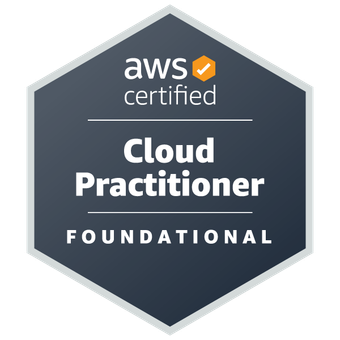AWS Certifications: Getting Started with Certified Cloud Practitioner

After finishing the LFCS, I figured the next step was to go for some cloud certifications. I was specifically interested in AWS, and after checking out the certification paths, starting with the AWS Certified Cloud Practitioner felt like the best place to begin.
Study Materials
For this certification I once again went with the course on KodeKloud. I felt that they did a solid job covering key concepts and services, but there were a few topics on the test that were not really covered well in the videos.
As I went through the KodeKloud content, I built another Anki deck, which was a huge help given the number of services to remember. While many of them had intuitive names, several others were less obvious, and using Anki was the best way to keep them all straight for me.
Test Day
Unlike the LFCS, which took a couple of months of preparation, I felt ready for the CLF-C02 after about two weeks of studying. The material seemed simple enough and there isn’t a need for very deep knowledge. The challenge here is definitely more about breadth than depth. The multiple-choice format, as opposed to skill-based, also made it quite different from the LFCS.
After preparing my room and computer for the test and doing a quick review of the materials, I took the test on a Thursday evening after work. At first, I felt like I was speeding through the questions and would finish within 10 minutes. However, after completing about a third of the test, I realized that 65 questions was actually quite a lot in this kind of situation. I still finished with plenty of time to spare for review, but not as quickly as I’d initially expected.
Results
After submitting the test I got an immediate notification saying that I had passed, and within an hour I received emails confirming the passing grade as well as certification credentials.
What’s next?
Next I’m working on the AWS Solutions Architect Associate Certification, again mostly using KodeKloud. This course seems much more in depth, but it’s also much more interesting as there are actual labs and hands-on things to do, rather than just remembering what a hundred different services are.